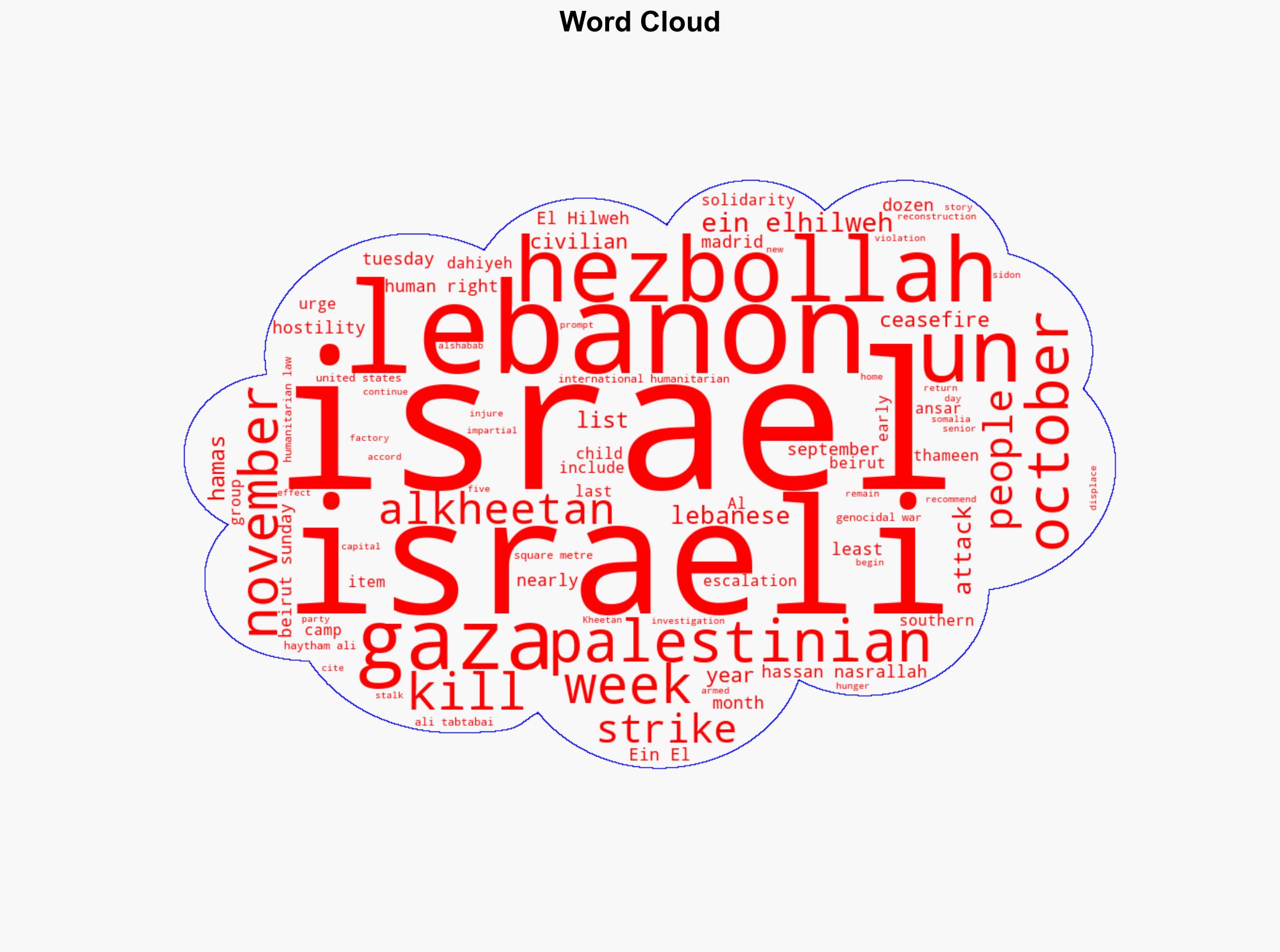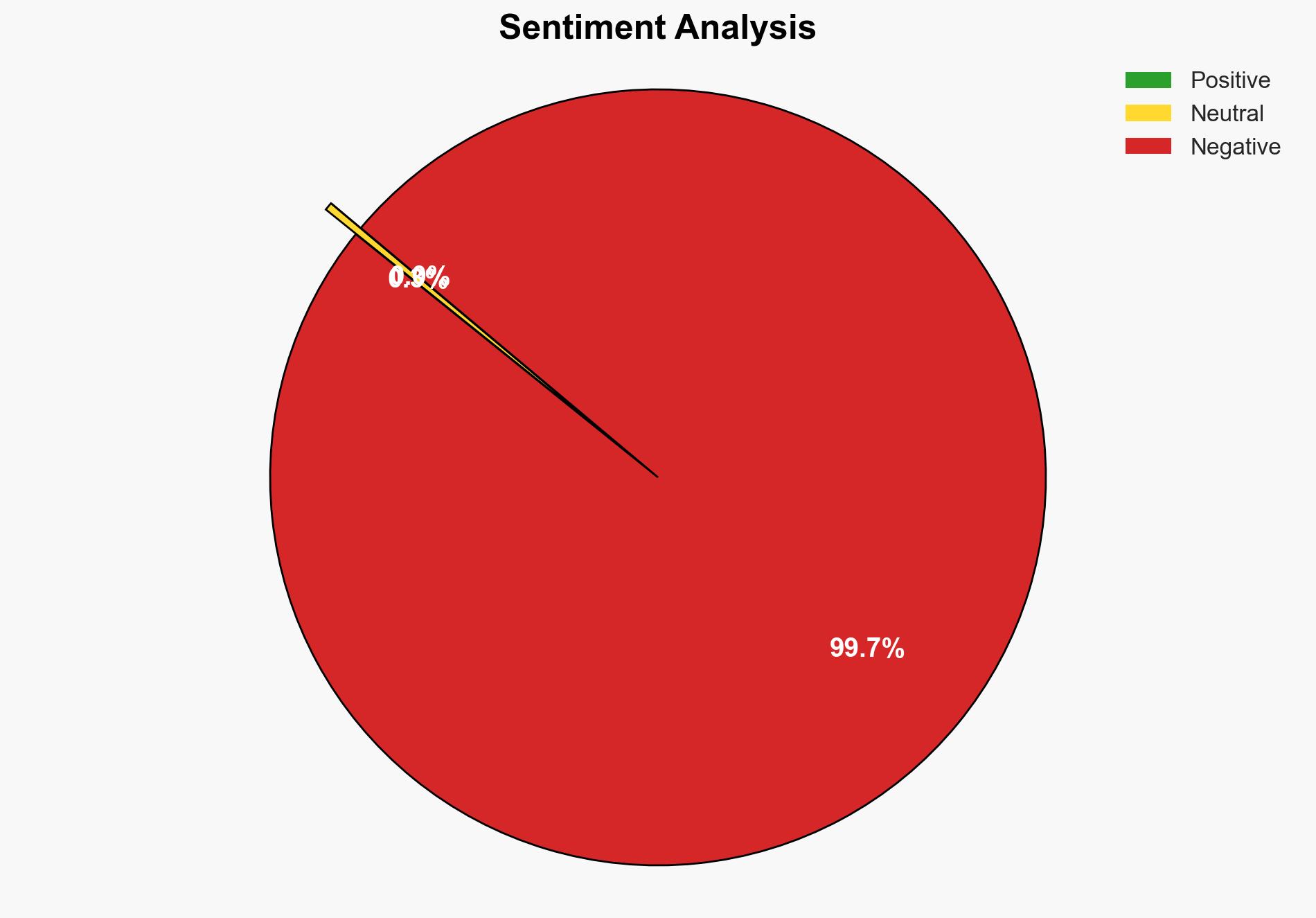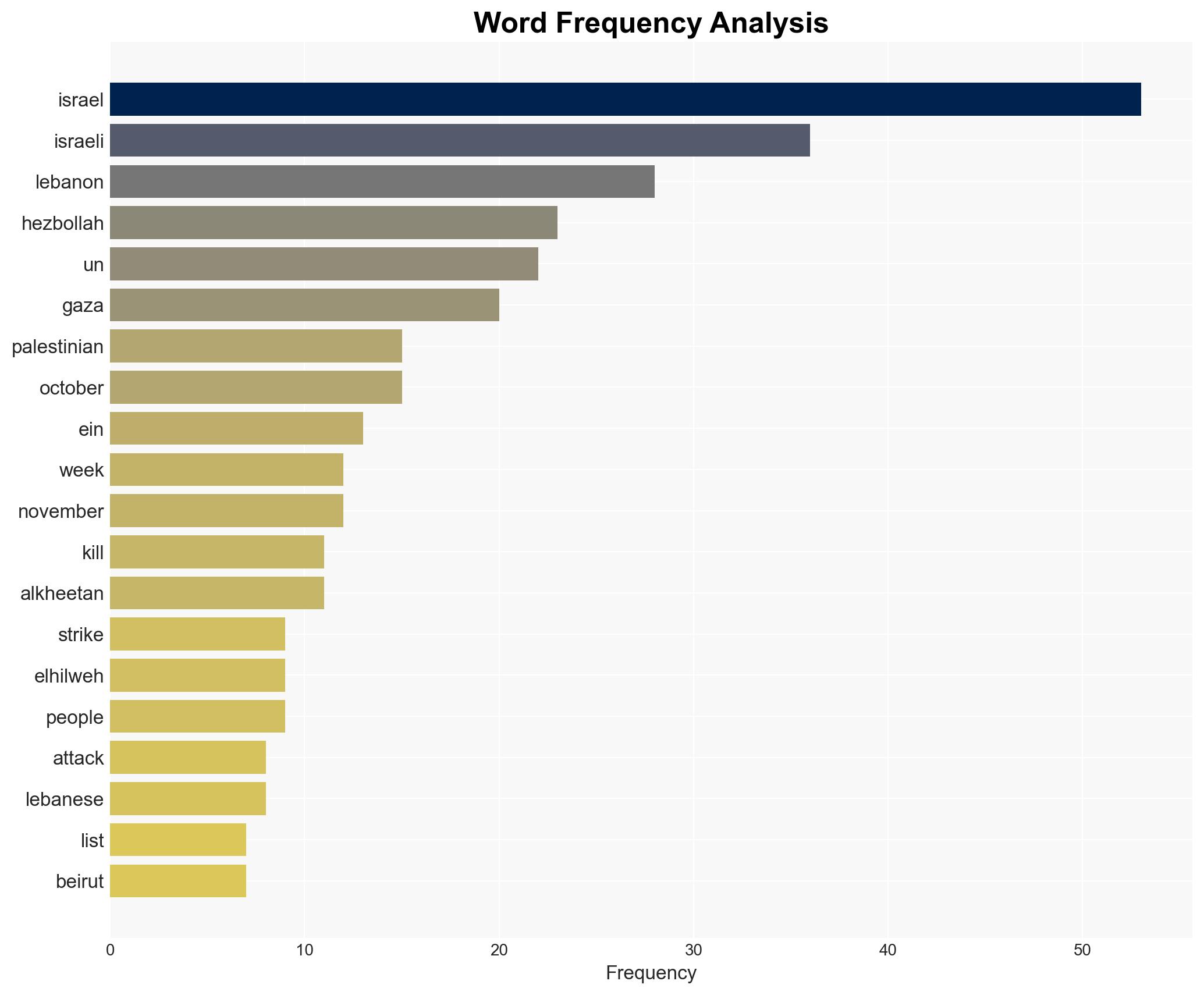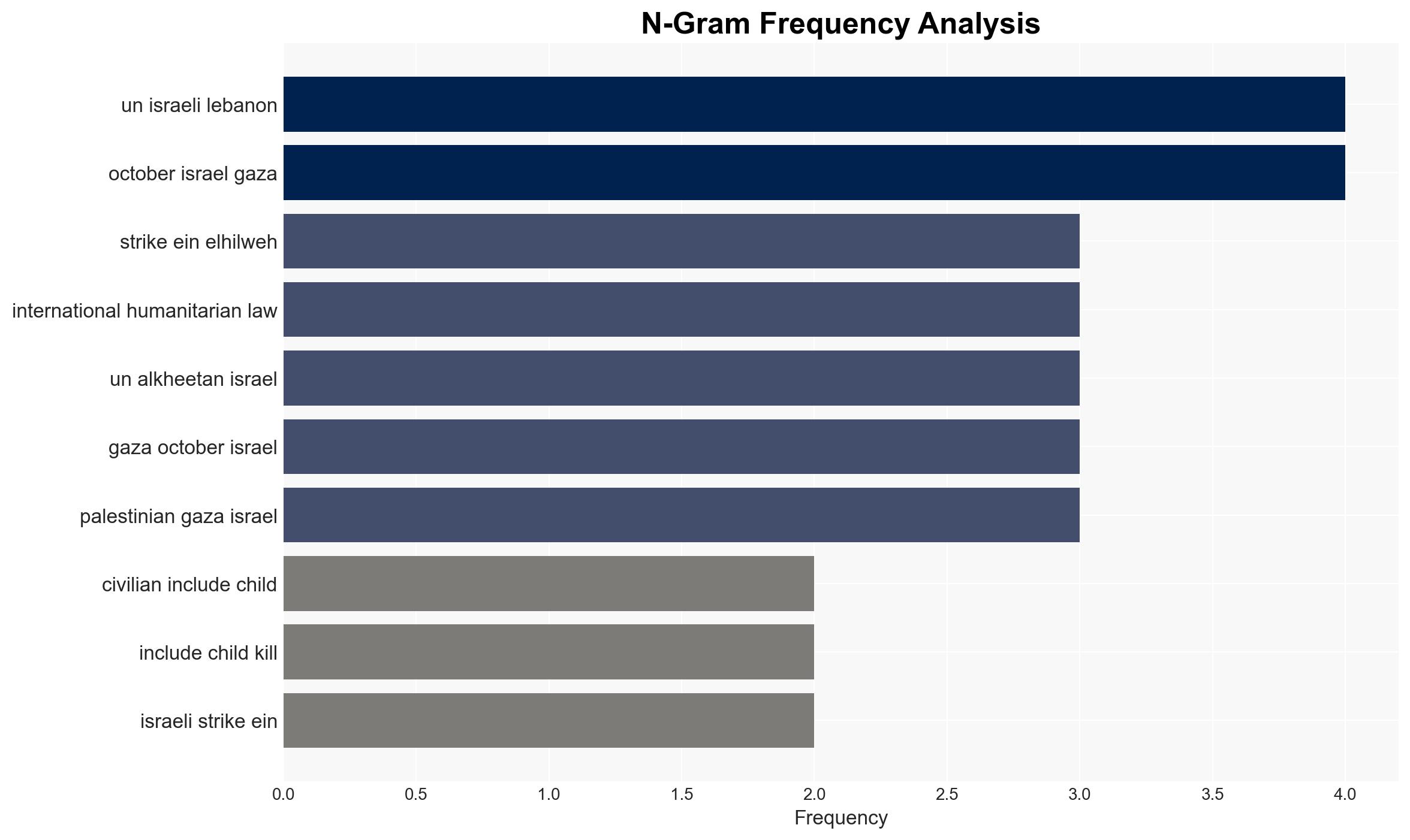UN calls for probe into Israels strikes on Lebanon
Published on: 2025-11-25
AI-powered OSINT brief from verified open sources. Automated NLP signal extraction with human verification. See our Methodology and Why WorldWideWatchers.
Intelligence Report: UN Calls for Probe into Israel’s Strikes on Lebanon
1. BLUF (Bottom Line Up Front)
The most supported hypothesis is that Israel’s military actions in Lebanon are primarily aimed at degrading Hezbollah’s capabilities, with civilian casualties being an unintended consequence. This hypothesis is supported by Israel’s historical military strategy and recent escalations. Confidence level: Moderate. Recommended action: Engage in diplomatic efforts to de-escalate tensions and ensure compliance with international humanitarian law.
2. Competing Hypotheses
Hypothesis 1: Israel’s strikes in Lebanon are primarily targeted at Hezbollah military infrastructure, with civilian casualties being collateral damage. This is consistent with Israel’s stated objective of neutralizing threats from Hezbollah.
Hypothesis 2: Israel’s strikes are part of a broader strategy to exert pressure on Lebanon and Hezbollah, potentially to influence political dynamics in the region. Civilian casualties could be a tactic to destabilize Hezbollah’s support base.
Hypothesis 1 is more likely given Israel’s historical focus on military targets and the strategic importance of weakening Hezbollah’s military capabilities.
3. Key Assumptions and Red Flags
Assumptions: It is assumed that Israel’s military strategy remains consistent with past operations focused on military targets. It is also assumed that Hezbollah continues to pose a significant threat to Israel.
Red Flags: The potential for biased reporting from both Israeli and Lebanese sources. The possibility of misinformation or propaganda influencing public perception.
Deception Indicators: Any sudden shifts in military tactics or unexpected alliances could indicate strategic deception.
4. Implications and Strategic Risks
The continued military engagement risks escalating into a broader conflict, potentially drawing in regional actors and destabilizing the Middle East. Economic impacts could arise from disrupted trade and increased military spending. Politically, increased tensions could undermine diplomatic efforts and fuel anti-Israel sentiment globally.
5. Recommendations and Outlook
- Encourage diplomatic dialogue between Israel and Lebanon, possibly mediated by a neutral third party, to address grievances and reduce hostilities.
- Monitor for signs of escalation, such as increased military mobilization or rhetoric from regional actors.
- Best-case scenario: A ceasefire agreement is reached, and diplomatic negotiations lead to a de-escalation of tensions.
- Worst-case scenario: The conflict escalates into a full-scale war, drawing in neighboring countries and causing significant regional instability.
- Most-likely scenario: Continued low-intensity conflict with periodic escalations, maintaining a status quo of tension without full-scale war.
6. Key Individuals and Entities
Thameen Alkheetan (UN Spokesperson), Haytham Ali Tabtabai (Hezbollah Commander), Hassan Nasrallah (Hezbollah Leader)
7. Thematic Tags
Structured Analytic Techniques Applied
- ACH 2.0: Reconstruct likely threat actor intentions via hypothesis testing and structured refutation.
- Indicators Development: Track radicalization signals and propaganda patterns to anticipate operational planning.
- Narrative Pattern Analysis: Analyze spread/adaptation of ideological narratives for recruitment/incitement signals.
Explore more:
Counter-Terrorism Briefs ·
Daily Summary ·
Support us





